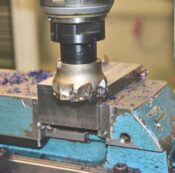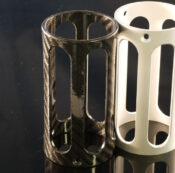CNC milling is the process of cutting and drilling materials at different angles across multiple axes. This blog will look at the calibre of CNC milling machinery available and how the milling process works.
What are CNC Milling Machines?
CNC stands for Computer Numerical Control. This is programmed code that instructs milling machines to move, cut and drill as accurately as they do. The result of this programmed code within a CNC milling machine is precisely manufactured components in varying quantities.
What are the different types of CNC Milling Machines?
There are number of different types of CNC milling machines.
3, 4 & 5 axis milling machines
One factor that differentiates milling machines is the number of movement axes they have, CNC milling machines can have between 3 and 5 axes:
3 axis milling machines
A 3 axis milling machine cuts in any direction. Therefore, this CNC milling machine cuts along the X, Y, and Z axes.
4 axis milling machine
A 4 axis milling machine cuts as the above milling machine but offers the ability to rotate the 4th-axis at 90° to the tool.
5 axis milling machine
Following the pattern, a 5 axis milling machine is the most complete CNC milling machine, with the functionality to rotate the A and B axis.
Vertical & Horizontal Milling Machines
The number of axes isn’t the only differentiating factor between milling machines. CNC milling machinery can also come with different cutting techniques:
Vertical Milling Machine
In a vertical mill machine, you will find that the spindle axis on the mill is vertically orientated. There are two main types of vertical mill: a turret mill, and a bed mill.
A turret mill has a stationary spindle and the table is moved alongside the spindle to cut the raw material.
The table on a bed mill only moves perpendicular to the spindle’s axis with the spindle moving parallel to its own axis.
Horizontal Milling Machine
A horizontal mill machine has the same cutting techniques as above, but the mill is horizontally orientated. Horizontal mills often feature a built-in rotary table that allows milling at various angles; this is called a universal table.
What is the CNC Milling Process?
CNC Milling involves fixing the required material to a table within the milling machine. The necessary tool is placed into a spindle, which is either vertically or horizontally aligned. The table, with material, then moves in relation to the tool so that the correct cuts are made to contribute to the desired finished object.
The table moves based on the computer numerical control code that has been input. This code is either taken from CAD software and converted into coordinates, or the program will be written using a variant of G-code.
Once the program is complete, there will be a complete, finished component.
What do CNC Mills Produce?
In an engineering factory, like ours, CNC mills are ideal for manufacturing highly detailed and complex components which can be utilised in many different industries.
With the detail and functionality available within CAD software systems, combined with the precision and ability of CNC mills, milling machines can produce virtually any shape or form of components required!
Watch our CNC Mill video below:








